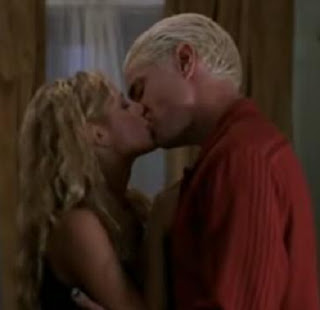Copyright 2010 by Gary L. Pullman
As I mentioned in my
“‘The Philosophy of Composition’ and ‘The Red Room’” article,
Edgar Allan Poe argues that a writer shouldn’t write anything at all until he or she knows how his or her story (or poem) will end and, in fact, should plot the narrative backward, from the ending to the beginning, so that he or she is able to maximize the impact of the story’s emotional effect. This is sound advice, but, for many aspiring writers, it poses a difficult question: how, precisely, would a writer know
how to write a story backward, as it were?
I certainly wouldn’t challenge the advice of a writer of Poe’s stature. Among horror writers, he is in class by himself, a true master among masters. Not even today’s
maestro,
Stephen King, whose output dwarfs Poe’s own work, measures up against Poe.
What I
am prepared to do, though, is to offer two other, alternative methods of plotting horror fiction. One is based upon my analysis of King’s work--or, at least, my analysis of a few of King’s novels. I believe that this alternative approach can suit today’s writers, whether of horror or another genre of fiction, well.
Let’s consider a novel that has been the topic of quite a few of my own recent posts to
Chillers and Thrillers:
Under the Dome. The evil that takes place in this story occurs as the result of the descent of a transparent dome, or barrier, that cuts off a small town in Maine, Chester’s Mill, from the rest of the United States and, indeed, the world. The wickedness ends when the dome is lifted. What comes down must go up. This is the basis of the alternative method of ending stories that I mentioned. Not down and up (or even up and down, for that matter)
per se, but a pair--any pair--of binary opposites: down/up, left/right, start/stop, right/wrong, good/evil. . . you name them
We tend to think in dualities, ordering reality according to a twofold structure of opposite categories, traits, or values. Of course, such a structure is far too simplistic and, therefore, erroneous. There is always a middle ground, always a great many shades of gray between the extremes of black and white.
King is aware of this, of course, and his novel takes advantage of the simplicity of the duality of dome-down/dome up. First, the military tries to destroy the dome by launching two Cruise missiles against the barrier. When this tactic fails, the brass douses the dome with an experimental acid that is capable of penetrating solid rock. Again, the attack fails. The dome remains in place, unharmed. It is only when Julia Shumway persuades the adolescent extraterrestrial female who has set the dome in place to remove it that the barrier is taken away.
In
Desperation, King uses another pair of opposites to structure his problem-solution plot. The demon Tak escapes from a caved-in mine which is opened by a local mining company. He wrecks havoc until the mine is closed again. The dichotomy: open (mine)/closed (mine). The horror and terror and evil and pain and suffering takes place between these two polarities. Again, a duality (open/close) is used to structure the novel’s plot.
Any duality can become the basis of a plot, and using the array of points between the extremes of the continuum, the writer can create the middle of his or her story, creating suspense while, at the same time, disguising the fact that the end of the story will be based upon the opposite of the continuum with which the narrative began.
Let’s look at one additional example. The novel
Insomnia is based upon the extremes of sleeplessness (insomnia) and eternal rest (death). At the story’s outset (and throughout the rest of the narrative, until the end), the protagonist is unable to sleep. He begins to see things from another dimension, and discovers that beings from this alternate universe seek to kill a woman; by sacrificing himself, he prevents the woman from being killed. The story that started with his inability to sleep ends with his death, or eternal rest. Once again, a duality (insomnia/death, in the sense of eternal rest) is used to structure one of King’s narratives, the middle of which is taken up by the conflict between two adversaries from the alternate dimension, who vie for the woman’s life.
It seems odd that a novel--especially a novel as long and seemingly complex as King’s--could be based upon such a simple--indeed, simplistic--duality of extremes or opposites, but
Under the Dome,
Desperation, and
Insomnia show, as do several other of King’s books, that such is the case.
Finally,
Dean Koontz’s novel
The Taking illustrates the second alternative method of beginning and ending a novel to that which Poe suggests in “The Philosophy of Composition.” I have mentioned this technique in a previous post, calling it the bait-and-switch approach. The writer suggests that a story will end in a particular fashion, but, using situational irony, surprises the reader by ending the narrative in a different, unexpected, but appropriate fashion. Koontz suggests that the bizarre doings in
The Taking are due to a reverse-terraforming of the planet Earth by invading extraterrestrials who seek to make the hostile Earth habitable for their fellow aliens. Instead, the extraterrestrials turn out to be Satan and his angels.
Although Poe’s prescription for writing horror stories (plot backward from the end to the beginning so as to maximize the narrative’s emotional effect) is a superior method of storytelling, the ones exemplified in several of the works of King, such as
Under the Dome,
Desperation, and
Insomnia, and the one that Koontz’s fiction, including
The Taking, illustrate, are alternatives that can work and are much less demanding upon the writer than Poe’s approach.


















